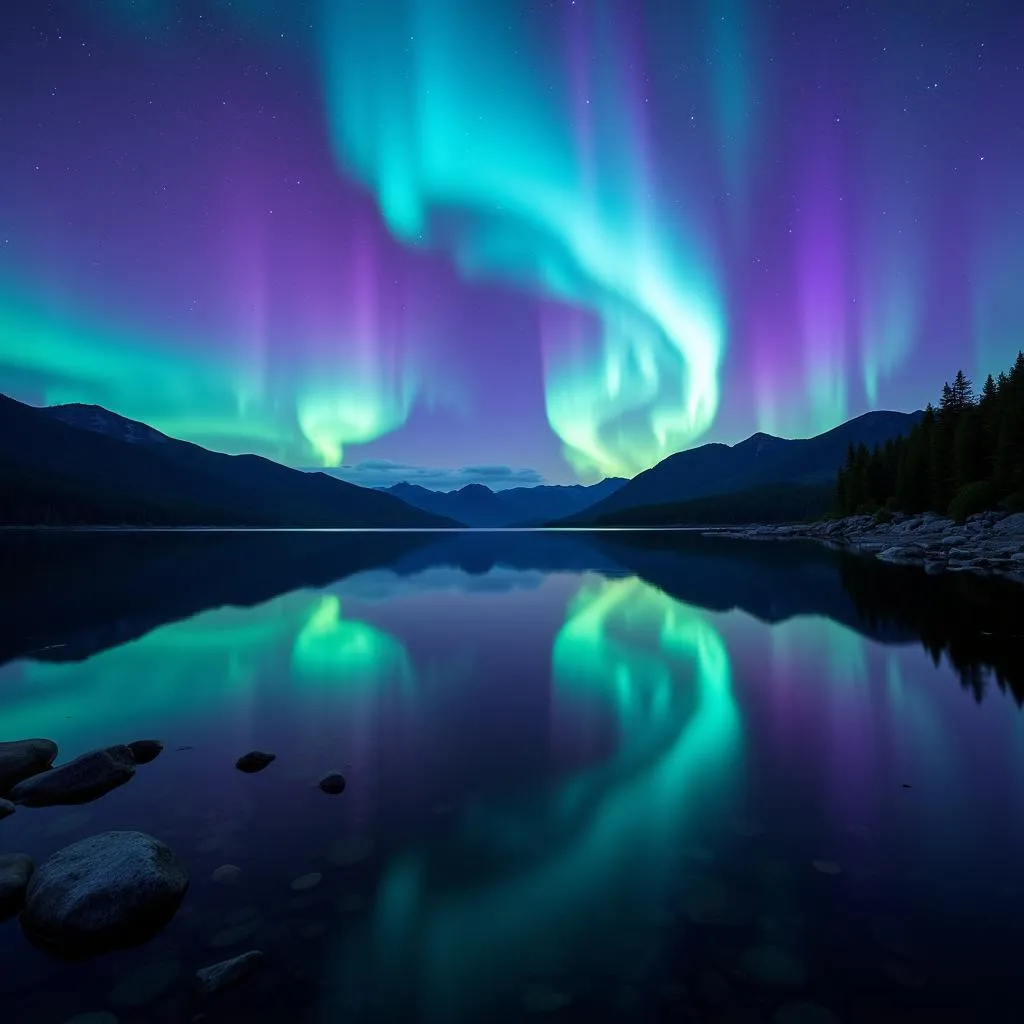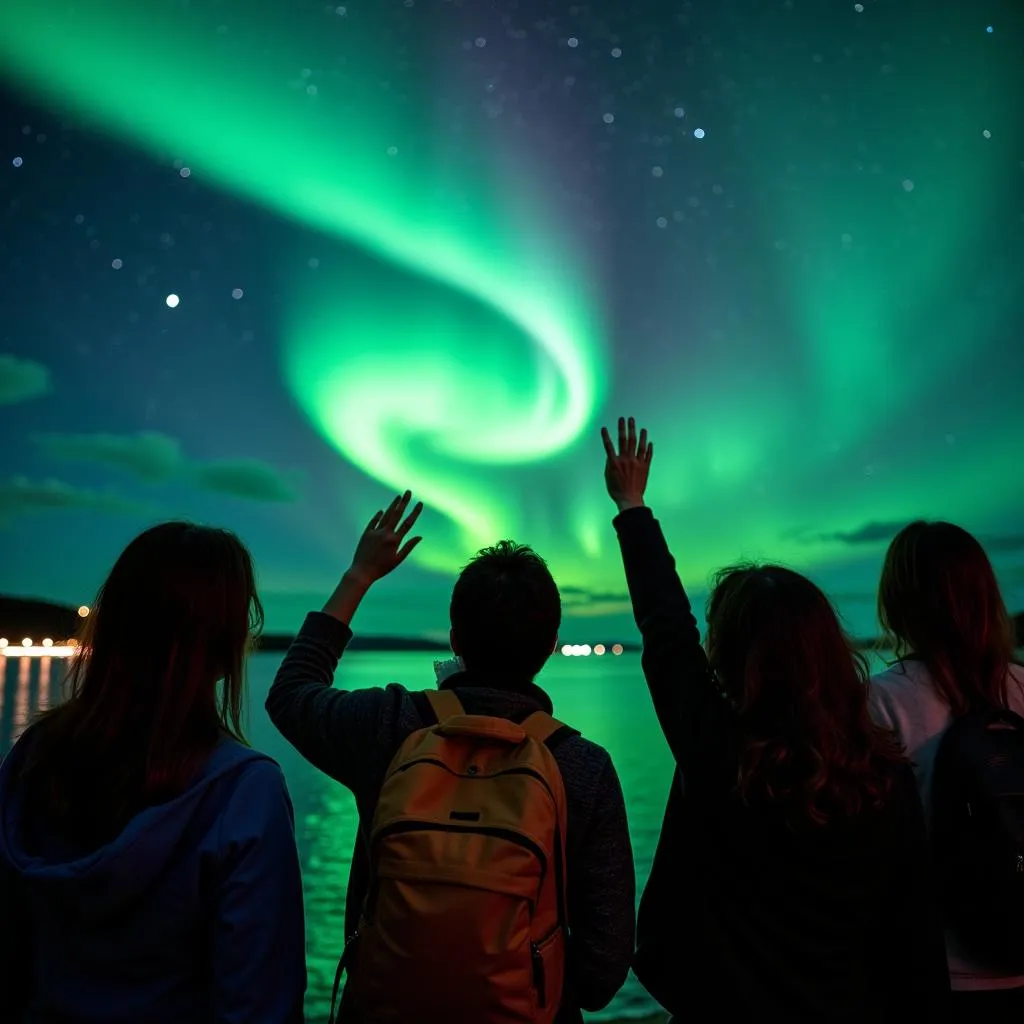Imagine standing under a sky ablaze with vibrant colors, shimmering and dancing across the night. This isn’t a dream; it’s the magic of the Aurora Australis, or Southern Lights, and Tasmania is one of the best places in the world to witness this breathtaking phenomenon.
 Southern Lights Tasmania Aurora Australis Over Mountains
Southern Lights Tasmania Aurora Australis Over Mountains
Why Choose Tasmania for a Southern Lights Tour?
Tasmania’s southern location, minimal light pollution, and clear night skies make it an ideal destination to chase the Southern Lights. Unlike the Northern Hemisphere, where the Aurora Borealis is a popular tourist attraction, the Southern Lights are a more intimate and less crowded experience.
When to See the Southern Lights in Tasmania
The best time to see the Southern Lights in Tasmania is during the southern winter months, from March to September. During this time, the nights are longer and darker, increasing your chances of witnessing the auroral display.
Where to Go for the Best Views
Hobart and Surrounds
While the Southern Lights can sometimes be visible from Hobart itself, heading further south to areas with less light pollution will significantly enhance your viewing experience. Some popular spots near Hobart include:
- Mount Wellington: The summit of Mount Wellington offers panoramic views of the night sky, making it a favorite spot for aurora chasers.
- South Arm Peninsula: With its dark skies and southern exposure, the South Arm Peninsula offers excellent opportunities for Southern Lights viewing.
- Cockle Creek: Located at the southernmost tip of Tasmania, Cockle Creek boasts some of the darkest skies in the state, maximizing your chances of catching the aurora.
 Tasmania Southern Lights Reflection on Water
Tasmania Southern Lights Reflection on Water
Other Prime Locations
Beyond Hobart, other areas in Tasmania renowned for their Southern Lights viewing potential include:
- Cradle Mountain-Lake St. Clair National Park: The dark skies above this pristine wilderness area provide an unforgettable backdrop for the aurora.
- Freycinet National Park: The iconic Hazards mountain range and secluded beaches of Freycinet offer stunning settings to witness the Southern Lights.
- Bruny Island: This island off the southeastern coast of Tasmania boasts remote locations with minimal light pollution, perfect for aurora spotting.
Tips for Photographing the Southern Lights
Capturing the beauty of the Southern Lights on camera requires some preparation and knowledge of night photography techniques. Here are some tips to help you get the perfect shot:
- Use a sturdy tripod: Long exposure times are necessary to photograph the aurora, so a stable tripod is essential.
- Choose a wide-angle lens: A wide aperture will allow you to capture more light and encompass the vastness of the aurora.
- Shoot in RAW format: This will give you more flexibility in post-processing to adjust white balance and exposure.
- Experiment with different settings: Adjust your ISO, aperture, and shutter speed to find the optimal settings for capturing the aurora’s movement and colors.
What to Expect on a Southern Lights Tour
Joining a guided Southern Lights tour in Tasmania can enhance your aurora chasing experience. Local tour operators possess expert knowledge of the best viewing locations, weather conditions, and aurora forecasting. They provide transportation, photography tips, and often offer snacks and hot beverages to keep you comfortable during the nighttime adventure.
 Tasmania Southern Lights Tour Group
Tasmania Southern Lights Tour Group
Conclusion
Embarking on a Southern Lights tour in Tasmania is an unforgettable experience that will stay with you long after the lights have faded. From the thrill of the chase to the awe-inspiring beauty of the aurora itself, this adventure is sure to ignite your sense of wonder and leave you with memories to cherish. So pack your bags, embrace the darkness, and prepare to be captivated by the magic of the Southern Lights in Tasmania.
FAQs about Southern Lights Tours in Tasmania
Q: Can I see the Southern Lights every night in Tasmania?
A: While Tasmania offers excellent viewing opportunities, the aurora is a natural phenomenon influenced by solar activity and weather conditions. Clear, dark skies and high solar activity increase your chances of witnessing the lights.
Q: Do I need any special equipment to see the Southern Lights?
A: No special equipment is required to see the Southern Lights. However, bringing a red light torch can be helpful for navigating in the dark without affecting your night vision.
Q: What should I wear on a Southern Lights tour?
A: Even during the summer months, Tasmanian nights can be chilly. Dress warmly in layers, including a hat, gloves, and waterproof outer layer.
Need assistance planning your Southern Lights adventure in Tasmania? Contact us at Phone Number: 0373298888, Email: SEO.backlink@gmail.com, or visit our office at 86 Cầu Giấy, Hà Nội. Our dedicated team is available 24/7 to answer your questions and help you create memories that will last a lifetime.